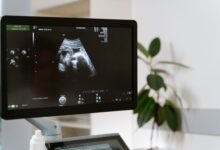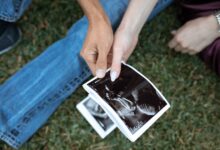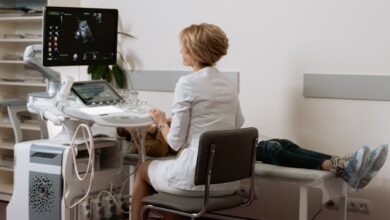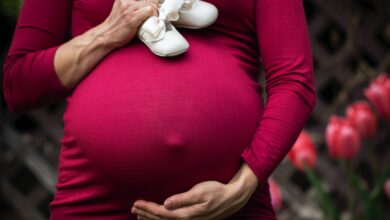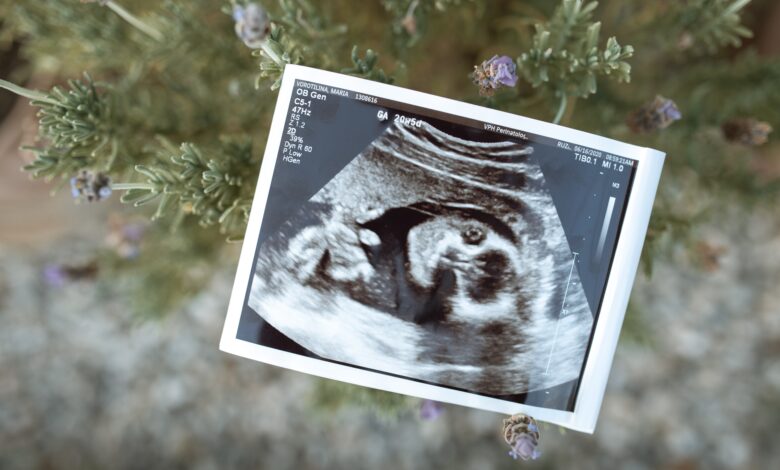
Where’s the baby?
On the 8th day of pregnancy, the implantation process continues: the blastocyst continues to implant itself in the uterine mucosa which it fully penetrates on the 9th day. The uterine epithelium then completely covers the implantation site.
At two weeks, the embryonic button has the shape of a sphere consisting schematically of two superimposed hemispherical cavities:
· the amniotic cavity which was formed by removal of the embryonic button and the trophoblast;
· the embryonic button, of which certain cells form a flattened layer, and the blastocyst which takes the form of a disc formed of two layers: an internal leaflet and an external leaflet. We speak of a didermic embryonic disc.
This second week is also marked by the beginning of the placement of the placenta, a platform for foeto-maternal exchanges. On the 9th day, the trophoblast (outermost layer of cells) divides into two layers of cells. In one of them will form small pockets called lacunae. On the 12th day, small vessels of the uterine lining rupture and their blood then fills its gaps. These merge on the 13th day: this is the outline of the placenta and the establishment of the foeto-maternal circulation.
At the end of this second week of pregnancy, the egg measures approximately 0.2 mm.
Where is the mother’s body?
The second week of pregnancy corresponds to 4 weeks of amenorrhea. The rules are expected at the end of the week, the future mother is therefore still unaware of her pregnancy.
Yet great hormonal upheavals have already begun in his body. At the level of the ovary, the corpus luteum – created from the rest of the follicle – produces a large quantity of progesterone which ensures good implantation of the egg. The trophoblast produces the hCG hormone or pregnancy hormone, which nourishes the endometrial tissue and keeps the corpus luteum active. The secretion of hCG will continue for 12 weeks, the time for the placenta to take over. It is precisely this hCG hormone that is detected in the pregnancy test.
This change in hormonal climate can cause various early pregnancy ailments such as nausea, swollen breasts, but very light and not always noticed by the future mother.
Advice
If you are really impatient, it is possible to do an early pregnancy test. These tests promise efficacy 4 days before the estimated date of menstruation thanks to a higher sensitivity to hCG (10 to 12.5 IU/l), but their reliability is less, in particular due to variations in the date of ovulation and hCG hormone levels according to women. Better to wait a few days late period.
In the meantime, continue to avoid all risky practices: self-medication, alcohol and drug use, exposure to X-rays or chemicals.

